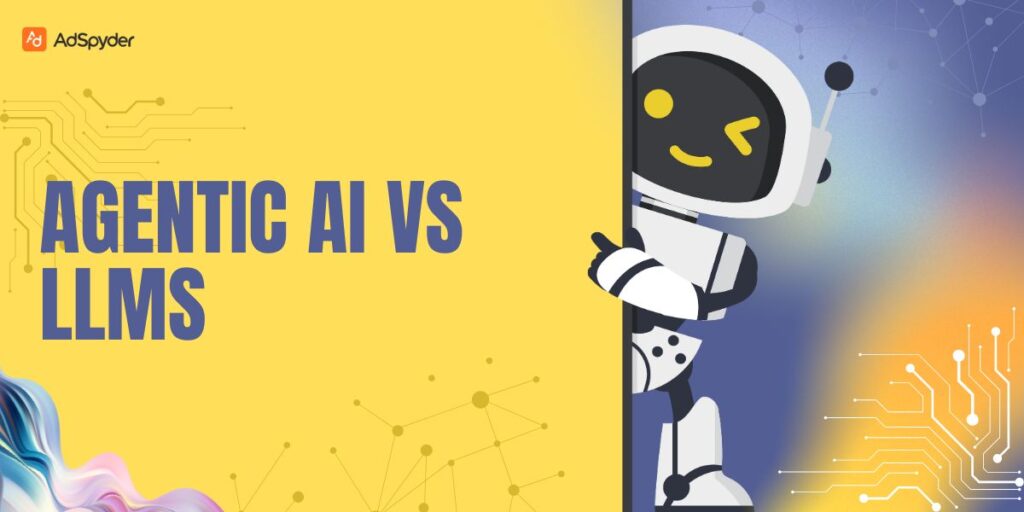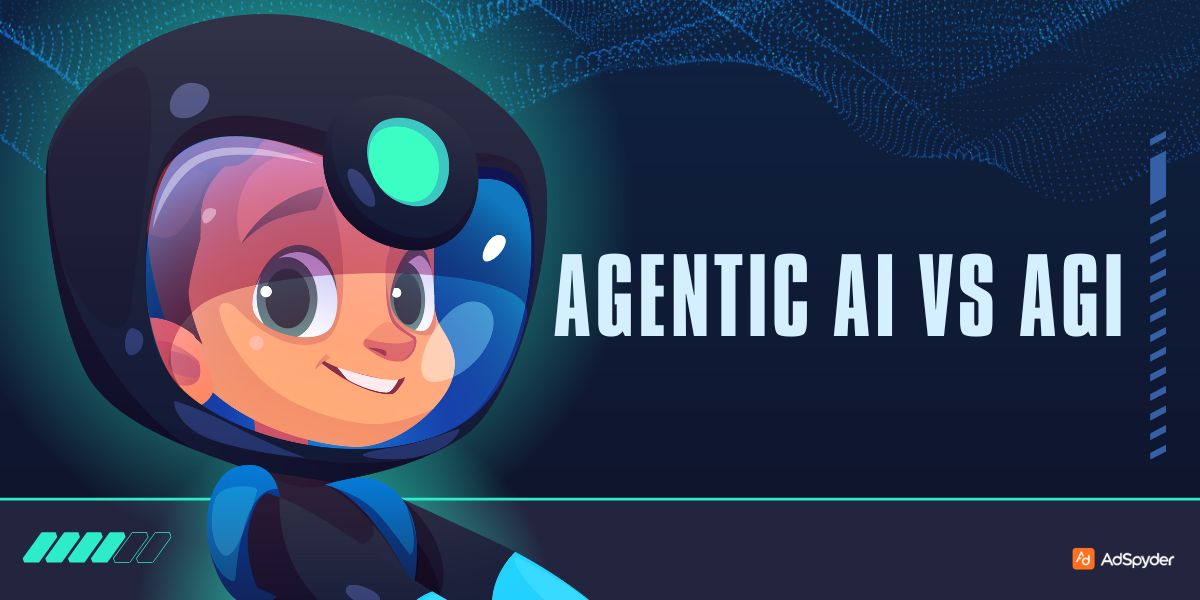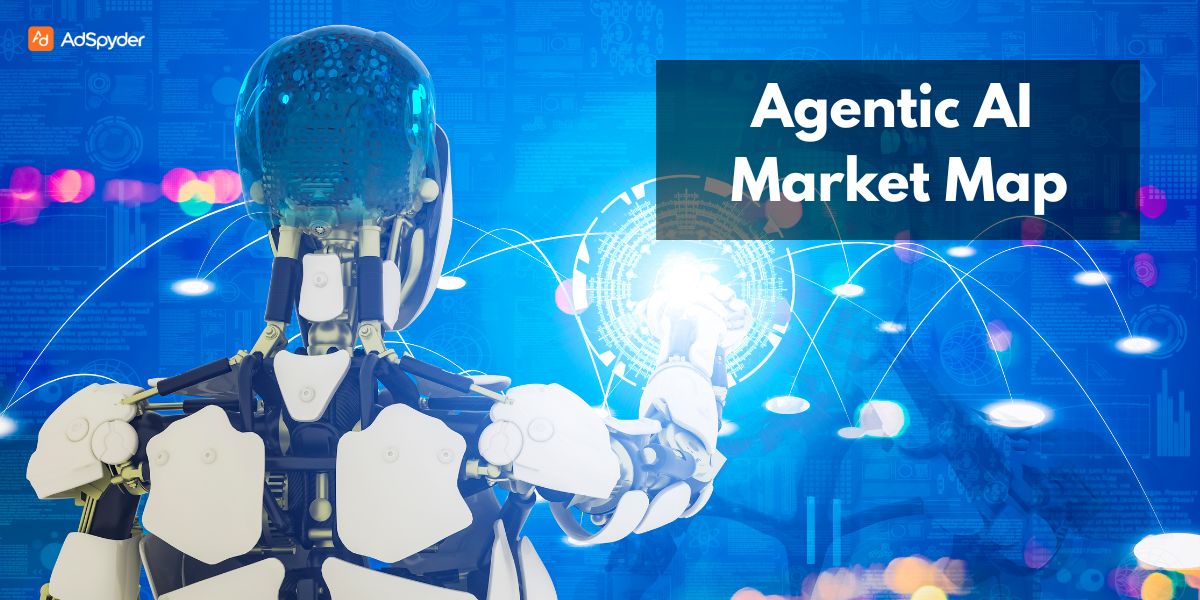In today’s AI landscape, Large Language Models (LLMs) and Agentic AI represent two of the most transformative innovations. However, they’re often confused—or used interchangeably. The reality is: they serve very different functions, despite being closely connected. If LLMs are the reasoning core, Agentic AI is the complete system built around that core. One predicts. The other plans, acts, and learns. In this article, we’ll break down the distinction between Agentic AI vs LLMs—exploring their architectures, limitations, and how they complement one another.
Ready to Elevate your Marketing Strategy?
What Are LLMs?
Large Language Models (LLMs) are foundation models trained on massive datasets to predict the next token (word, symbol, or character) in a given sequence. This statistical ability enables them to:
- Generate coherent responses
- Translate languages
- Write and debug code
- Summarize documents
- Answer questions
Popular LLMs include:
- OpenAI’s GPT series (e.g., GPT-4)
- Google’s Gemini
- Anthropic’s Claude
- Meta’s LLaMA models
What LLMs Are Great At:
- Natural language generation
- Pattern recognition in text
- Question answering
- Few-shot and zero-shot learning
However, LLMs on their own are stateless and reactive. They don’t have persistent memory, they don’t take real-world actions, and they don’t understand goals in a dynamic, adaptive way.
Check Out – Agentic AI vs Generative AI
What Is Agentic AI?
Agentic AI is a system design paradigm that wraps around LLMs to create autonomous, goal-driven agents. These agents:
- Interpret user goals
- Plan multi-step tasks
- Use tools or APIs to take action
- Monitor and adjust based on outcomes
In short, Agentic AI does something with the outputs of LLMs.
What Agentic AI Systems Include:
- A reasoning core (usually an LLM)
- A memory system (short- or long-term)
- A planning module (to decompose goals)
- A tool orchestration layer (APIs, scripts, workflows)
- An execution environment (to act on the plan)
- A feedback loop (for reflection and adaptation)
Must See – Agentic AI vs Traditional AI
Key Differences: LLMs vs Agentic AI
| Dimension | LLMs | Agentic AI |
| Purpose | Generate text or responses | Complete goals through planning and action |
| State or Memory | Stateless (or limited context) | Stateful (via memory modules) |
| Tool Usage | None or embedded in prompt | Dynamic tool calling (e.g., APIs, scripts) |
| Planning | None | Explicit multi-step planning |
| Feedback & Adaptation | Not built-in | Core design feature |
| Output | Language | Language + action + execution trace |
A Real-World Example: Software Deployment
User input:
“Review my code, deploy it to staging, and notify the QA team.”
LLM Output:
“Your code looks clean. To deploy, run npm build && npm deploy staging. Then email qa@example.com.”
(Informative, but passive)
Agentic AI Behavior:
- Analyzes and reviews the code using a static analysis tool
- Triggers the CI/CD pipeline for deployment
- Verifies the deployment success
- Sends a Slack or email notification to QA
(Autonomous and goal-completing)
Conclusion: LLMs describe actions. Agentic AI executes them.
Can Agentic AI Work Without an LLM?
In theory, yes—but most modern implementations rely on LLMs for:
- Natural language understanding
- Plan generation and decision-making
- Error handling and fallback logic
That said, Agentic AI systems also integrate symbolic reasoning, deterministic rules, or machine learning models when LLMs aren’t the best fit for a subtask.
In practice: Agentic AI ≈ LLM + memory + planner + tools + feedback loop
Must See – Agentic AI vs RAG
When to Use Each
| Use Case | Best Fit |
| Writing blog content | LLM |
| Explaining a codebase | LLM |
| Filing support tickets autonomously | Agentic AI |
| Running multi-step workflows | Agentic AI |
| Creating synthetic data | LLM |
| Triage + respond + act on input | Agentic AI |
Final Thoughts for Agentic AI vs LLMs
LLMs have fundamentally changed how we generate and interact with text. But text generation is not task completion. That’s where Agentic AI comes in—turning passive output into active outcomes.
While LLMs are the cognitive engine, Agentic AI adds structure, memory, action, and autonomy, enabling AI systems to function more like capable digital collaborators.
Together, they form a powerful partnership. But understanding the distinction helps organizations deploy the right architecture for the right challenge.
FAQs
Are Agentic AI vs LLMs the same thing?
No. LLMs are predictive models that generate text based on input prompts. Agentic AI wraps LLMs with planning, tool usage, memory, and action-taking capabilities.
Can you build Agentic AI without LLMs?
Yes, but it’s uncommon. Most agentic systems today rely on LLMs for language understanding and reasoning. Non-LLM agents tend to use rules or reinforcement learning.
What are the limitations of using only an LLM?
LLMs are stateless, cannot plan tasks, don’t use tools natively, and cannot remember or adapt across multiple steps without additional systems.
What capabilities does Agentic AI add to an LLM?
Planning, memory (short and long-term), tool integration (e.g., APIs), feedback loops, and autonomous execution across multi-step workflows.
Is Agentic AI slower than LLMs?
It can be, since it runs multi-step logic, makes tool calls, and handles decision trees. However, it’s also more powerful for completing complex tasks.
Can I convert an LLM-based chatbot into an Agentic AI system?
Yes. By adding memory, planning logic, and tool-use capabilities, you can evolve a chatbot into a functional agent that executes tasks, not just converses.
Do LLMs have memory?
LLMs are stateless by default. They can retain short-term context within a prompt but don’t have persistent memory unless it’s architected externally.
What frameworks are used to build Agentic AI on top of LLMs?
Popular tools include LangChain, LangGraph, CrewAI, AutoGen, OpenAgents, and custom orchestration layers using Python, FastAPI, or cloud-native tooling.
Is Agentic AI just another buzzword for advanced LLMs?
No. Agentic AI describes a systems architecture that goes beyond language prediction to goal fulfillment, with autonomy, planning, and tool orchestration.
When should I use an LLM vs Agentic AI?
Use LLMs when you need content, insight, or text generation. Use Agentic AI when you need end-to-end task execution, decision-making, or multi-tool workflows.




